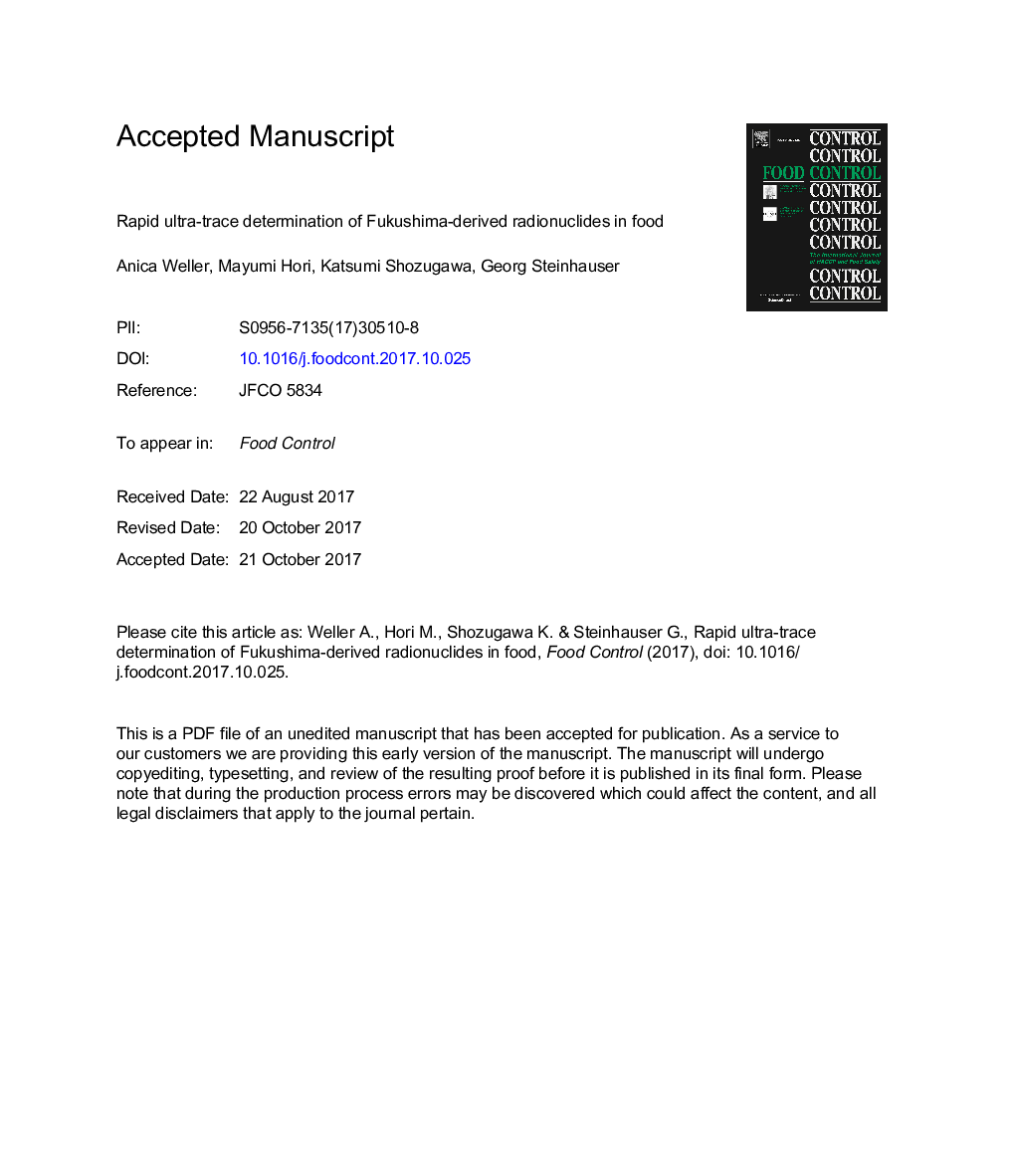| Article ID | Journal | Published Year | Pages | File Type |
|---|---|---|---|---|
| 8888240 | Food Control | 2018 | 22 Pages |
Abstract
A selection of 35 food samples from Japan (plus one seawater sample and one mushroom sample from Russia) were analyzed by gamma spectrometry and liquid scintillation counting. The analytical protocol included concentration of the sample by lyophilization and/or thermal treatment, resulting in exceptionally low limits of detections (in the low mBq/kg range or even below) for the radionuclides 134Cs, 137Cs, 108mAg, and 110mAg, as well as low limits of detection for 90Sr (in the low Bq/kg range). Radiosilver was found in several mussels at low concentrations. Most samples exhibited detectable radiocesium concentrations (below the regulatory limit). An analytical protocol for 90Sr in food was developed and optimized, allowing detection limits in the sub-Bq/kg range. However, despite this high sensitivity, no Japanese food sample exceeded the limit of detection. Only one mushroom sample from Russia revealed detectable traces of 90Sr, but the lack of 134Cs in this sample proves that these radioactive traces did not originate from the Fukushima Daiichi accident. Several moderately time-consuming steps in the analysis of 90Sr increase the sensitivity so far that this radionuclide can be measured directly with high sensitivity, without having to wait for about 2 weeks for the ingrowth of its daughter nuclide 90Y. Our study supports previous studies, which also attested Japanese foods a high level of radiological safety.
Related Topics
Life Sciences
Agricultural and Biological Sciences
Food Science
Authors
Anica Weller, Mayumi Hori, Katsumi Shozugawa, Georg Steinhauser,
